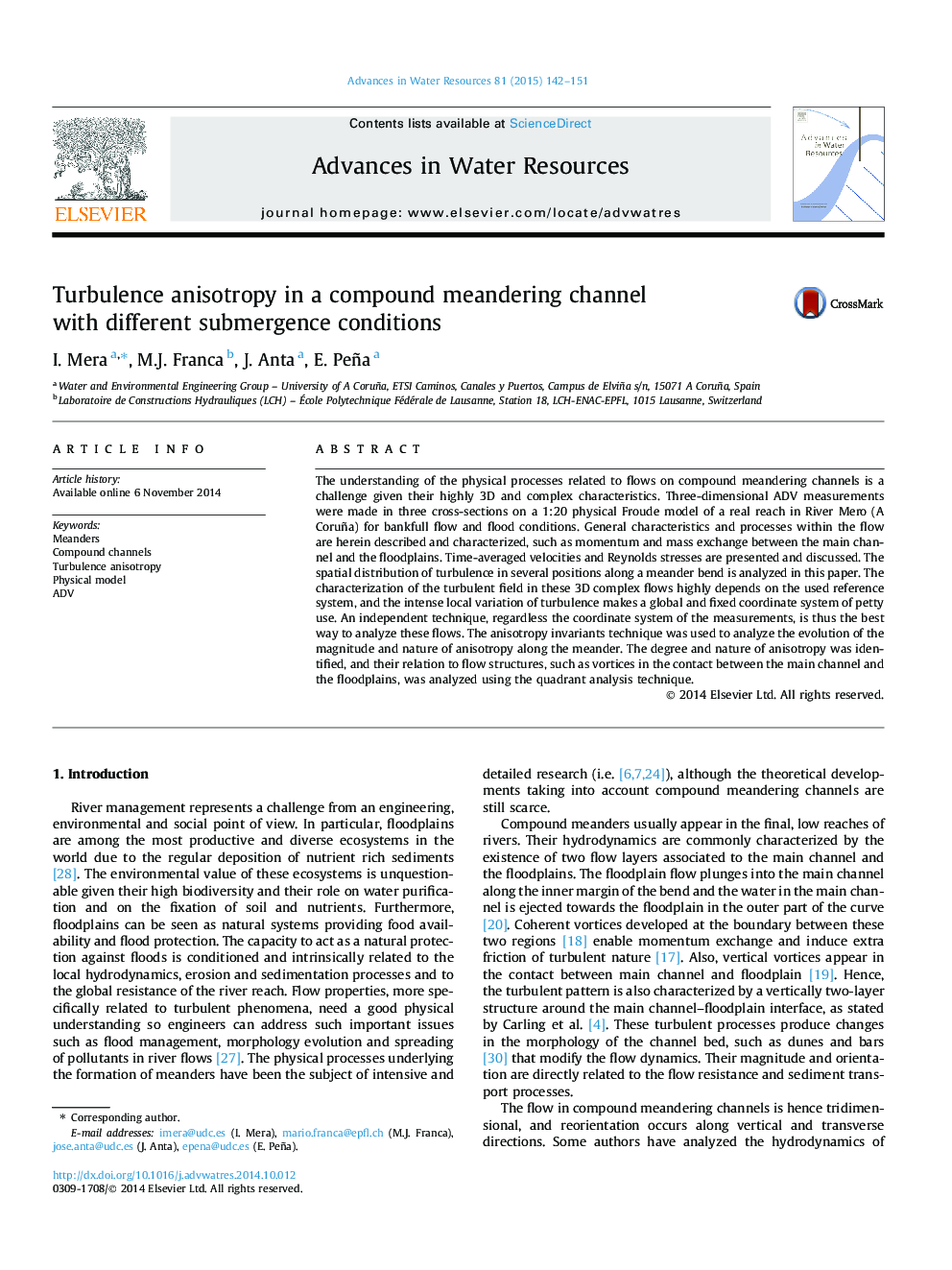| Article ID | Journal | Published Year | Pages | File Type |
|---|---|---|---|---|
| 4525365 | Advances in Water Resources | 2015 | 10 Pages |
•The hydrodynamics of a real compound meander are analyzed in a physical model.•Tridimensional velocities and mass transfer are characterized.•Turbulence is analyzed with a technique irrespective of the referential of measurements.•Turbulent structures are identified and related to mean flow features.
The understanding of the physical processes related to flows on compound meandering channels is a challenge given their highly 3D and complex characteristics. Three-dimensional ADV measurements were made in three cross-sections on a 1:20 physical Froude model of a real reach in River Mero (A Coruña) for bankfull flow and flood conditions. General characteristics and processes within the flow are herein described and characterized, such as momentum and mass exchange between the main channel and the floodplains. Time-averaged velocities and Reynolds stresses are presented and discussed. The spatial distribution of turbulence in several positions along a meander bend is analyzed in this paper. The characterization of the turbulent field in these 3D complex flows highly depends on the used reference system, and the intense local variation of turbulence makes a global and fixed coordinate system of petty use. An independent technique, regardless the coordinate system of the measurements, is thus the best way to analyze these flows. The anisotropy invariants technique was used to analyze the evolution of the magnitude and nature of anisotropy along the meander. The degree and nature of anisotropy was identified, and their relation to flow structures, such as vortices in the contact between the main channel and the floodplains, was analyzed using the quadrant analysis technique.
Graphical abstractAerial photograph of the river reach with a compound meander modeled in the laboratory and distribution of the anisotropy invariants across the section and throughout the water column for two different submergence conditions (Q = 35 and Q = 60 L/s).Figure optionsDownload full-size imageDownload as PowerPoint slide
